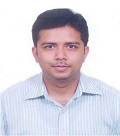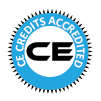
Dr.SANTOSH KUMAR
Associate Professor,Department of Orthodontics ,Kothiwal Dental College and Research Centre
Title: Effect of cervical pull headgear on head position
Biography
Biography: Dr.SANTOSH KUMAR
Abstract
Introduction: Head posture has a significant influence on the carnio-facial morphology. In extended head position, increased facial height, reduced sagittal dimensions and a steeper mandibular plane angle are generally observed, whereas when the head is flexed in relation to the cervical column there is shorter anterior facial height, larger sagittal jaw dimension and a less steep inclination of the mandible. Cervical pull headgear (CHG) is often used to redirect the maxillary growth in Class II malocclusion. Orthopedic force of significant duration is applied on the cervical region during the use of CHG which may have effect on the head posture.rnrnObjective: To evaluate changes in head position following the use of CHG and compare these changes with an untreated control group.rnrnSubjects & Methods: The test group comprised pre-treatment and post-treatment lateral cephalograms of 30 males, aged 11±1.5 years, who were receiving CHG therapy for correction of Class II malocclusion. Pre-observation and post-observation lateral cephalograms of 25 untreated male subjects, aged 11±1.6 years, served as controls. The average treatment time for the treatment group was 12±2.02 months and the average observation period for the control group was 11±1.03 months. Four postural variables (NSL/CVT, NSL/OPT, CVT/HOR, OPT/HOR) were measured to evaluate the head position in all subjects pre- and post-observations.rnrnResults: There was no significant difference in all the measurements concerning the head position within each group (p>0.05). The mean differences of pre- and post-observations of four postural variables in the CHG group were 1.43, 0.9, -1.13, and -1.08, while those of the control group were 1.56, -0.32, -0.24 and 0.04 respectively. There was no significant difference between the headgear and control groups for any of the postural variables measured (p=0.924, 0.338, 0.448 and 0.398 respectively).rnrnConclusions: Although postural variables showed considerable variability in both groups, head position exhibited no significant changes over a period of 11-12 months either in the control or headgear group. This study attempts to clarify to the clinicians that there is no deleterious effect on the head posture with the application of orthopedic force.rn

